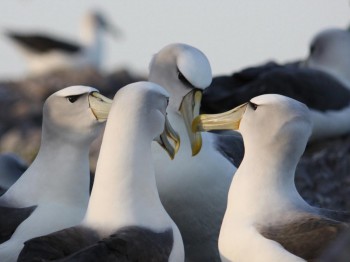Cassandra Faux (Australian Antarctic Division) and colleagues present a method for sexing seabirds from tissue and faecal samples in the journal Theriogenology, tested on Black-browed Thalassarche melanophris and Shy T. cauta Albatrosses and Northern Macronectes halli and Southern M. giganteus Giant Petrels.
The paper’s abstract follows:
“Sex identification of birds is of great interest in ecological studies, however this can be very difficult in many species because their external features are almost monomorphic between the sexes. Molecular methodology has simplified this process but limitations still occur with widely accepted methods using PCR and gel electrophoresis, especially when applied to degraded DNA. Real time PCR assays are emerging as a more efficient, sensitive and higher throughput means of identification, but there are very few techniques validated utilising faecal samples and small target sizes. We present a real time melt curve analysis assay targeting a small region of the CHD-1 gene allowing for high-throughput, sensitive, specific and easy to interpret sexing results for a variety of southern ocean seabirds using faecal and tissue samples.”

Shy Albatrosses on Albatross Island, photographed by Rachael Alderman
Reference:
Faux, C., McInnes, J.C. & Jarman, S.N. 2014. High-throughput real time PCR and melt curve analysis for sexing southern ocean seabirds using faecal samples. Theriogenology doi:10.1016/j.theriogenology.2013.12.021
John Cooper, ACAP Information Officer, 27 January 2014

 English
English  Français
Français  Español
Español